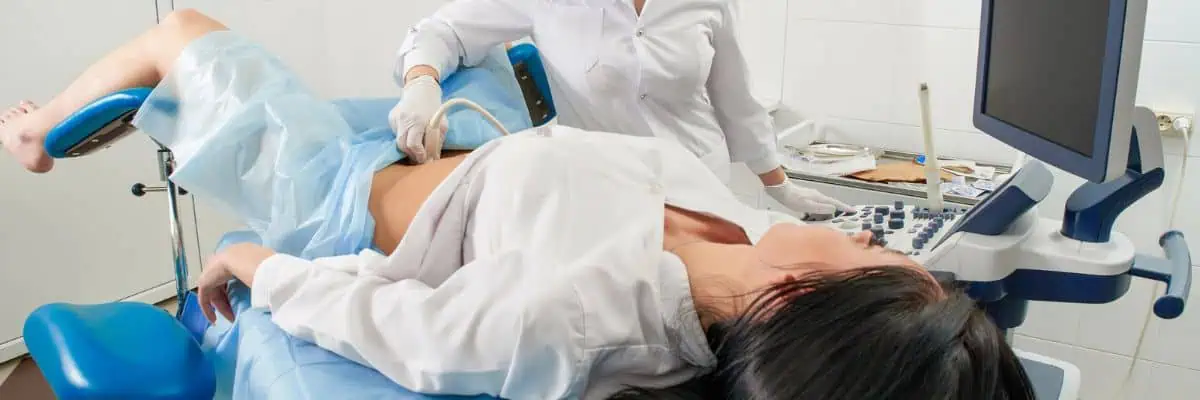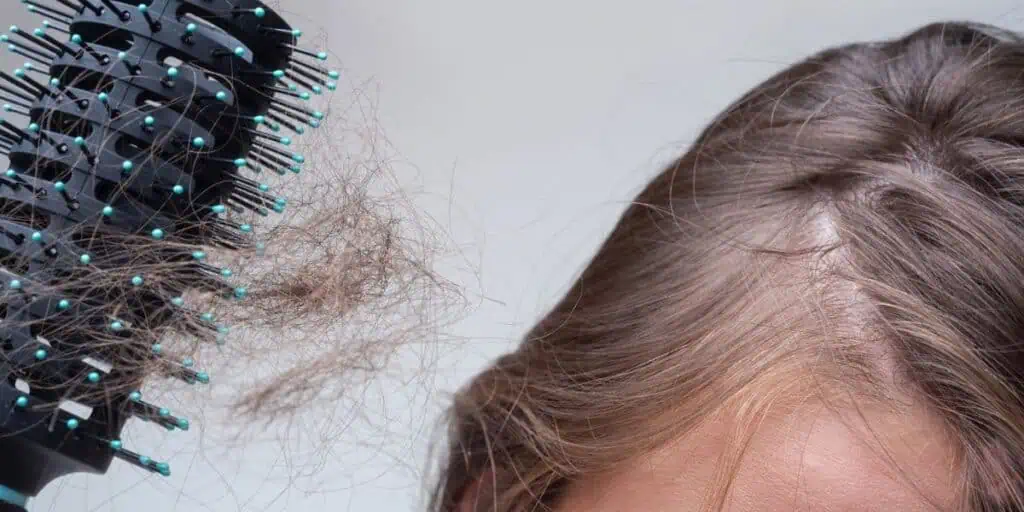What are the uterine septum and vaginal septum?
Congenital uterine abnormalities only occur in 4% of people with a uterus, and a uterine septum — or septate uterus — is the most common congenital uterine anomaly.
This particular uterine malformation consists of a membrane (septum) dividing the uterine cavity. A septum starts at the top of the uterus (fundus). The mildest form of a septate uterus is an arcuate uterus, with a small dent at the top of the uterus instead of the typical convex shape.
But the severity of a uterine septum can vary, ranging from a partial septum that extends slightly into the uterus (partial septate uterus) to a complete septum, which extends through the cervix and into the vagina (complete septate uterus). A septate uterus is not the same as a bicornuate uterus — a congenital abnormality where the uterus is heart-shaped.
A vaginal septum is another type of Müllerian anomaly, meaning it is present from birth. The prevalence of a septate vagina is lower than a septate uterus. The vagina can have a septum dividing the vaginal canal either horizontally or vertically. It can vary in severity, with some women experiencing only partial septation while others have a complete division.

Does a septate uterus cause any symptoms?
Some patients never experience side effects from their septate uterus. In fact, a uterine spetum may not even be noticeable during a routine pelvic exam.
Most patients don’t discover their uterine septum until they attempt to become pregnant, as the condition can cause an increased risk of recurrent pregnancy loss, decreased fertility, and preterm delivery.
If you’re experiencing infertility or recurrent pregnancy loss, imaging may be part of your diagnostic tests. Hysterosalpingography (HSG) —X-rays of the uterus and fallopian tubes — and ultrasonography may show a septate uterus. Magnetic resonance imaging (MRI) provides a more detailed image and can help Dr. Aliabadi distinguish between an arcuate, bicornate, or septate uterus.
What are the symptoms of a septate vagina?
Similar to a septate uterus, a septate vagina may not initially cause any symptoms or visible external abnormalities. However, symptoms can begin to appear around puberty. A person with a septate vagina can experience pelvic pain or discomfort, sexual dysfunction, constipation, and irregular or missed periods.
Symptoms can depend on the type of vaginal septum and its severity.
What is uterine septum surgery?
Uterine septums generally do not cause health problems and may not require any treatment at all. However, if you’re struggling to conceive or experiencing recurrent miscarriages, surgical resection of the uterine septum can remove the septum and potentially improve your pregnancy outcomes.
Uterine septum resection surgery (metroplasty) is an outpatient surgical procedure performed under general anesthesia. You will not be awake for the procedure but can go home the same day. Dr. Aliabadi performs uterine septum removal surgery with laparoscopy, although it can also be performed with hysteroscopic surgery or a combination of the two techniques.
What is laparoscopic surgery?
Dr. Aliabai and the Outpatient Hysterectomy Center specialize in laparoscopic surgery. This technique requires only a few small incisions in the abdomen rather than the large abdominal incision required by traditional surgery.
The laparoscope—a tiny, lighted camera—is inserted through one of the tiny holes, allowing the surgeon to see what they’re working on. Other long, thin tools are inserted through the other incisions, and the surgeon carefully cuts away and removes the septum.
We also use laparoscopic surgery to treat endometriosis, uterine adhesions, and uterine fibroids — improving patients’ successful pregnancy rates.
What is hysteroscopic metroplasty?
Similar to laparoscopic surgery, hysteroscopic septoplasty is a minimally invasive outpatient procedure. However, for hysteroscopic septum resection, the hysteroscope — a thin, lighted camera — is inserted via the vagina and through the cervix into the uterus. With this technique, no incisions are necessary.
Hysteroscopy can be combined with laparoscopic surgery — allowing the surgeon to see inside the uterus while performing surgery through the small abdominal incisions.
How is vaginal septum removal performed?
As with uterine septum resection, you will be under general anesthesia for this procedure. Vaginal septum resection can be performed without any incisions, as the procedure is performed through the patient’s vagina, not their abdomen.
You will be able to go home the same day.
What to expect after uterine septum or vaginal septum surgery
Depending on the type of surgery, you should be able to return to work within a day or two following surgery and can expect a full recovery after about two to four weeks. You may experience some abdominal pain after surgery. Some patients struggle to sit comfortably for a few days after surgery. This is normal, but call your doctor if the pain worsens.
You may also experience light spotting for up to one week after the surgery. Use a pad to absorb any blood or discharge. Avoid using tampons and abstain from sex until cleared by your doctor. For optimal recovery, follow all post-operative guidelines given by your doctor and attend all scheduled follow-up appointments.
Call your doctor immediately if you experience any symptoms of infection, such as chills, fever, or nausea.
Pregnancy after uterine septum removal
You should wait at least two months after a septate uterus operation before attempting to become pregnant — this allows your uterus ample time to heal and can reduce the chance of pregnancy complications.
Studies have presented conflicting reports on the effectiveness of uterine septum surgery to improve a patient’s live birth rate. One retrospective study found hysteroscopic metroplasty decreased patients’ miscarriage rates. A more recent controlled trial determined that uterine septum surgery was not much more successful than expectant management at improving reproductive outcomes.
Still, uterine septum surgery is not without risks, and some of those, such as intrauterine adhesions and uterine perforation, can adversely affect obstetric outcomes.
To determine if septate uterus surgery is the right choice for you, consult with a skilled, trusted OB/GYN — such as Dr. Aliabadi. The effectiveness of surgery will depend on the size and severity of your septum.
Can I have a successful pregnancy with a septate uterus?
Is septum removal surgery always necessary? For a vaginal septum, removal surgery will greatly improve your comfort and vaginal function. But if your septate uterus isn’t impacting your health, do you have to have surgery? Are there other options for a successful pregnancy?
It depends on the severity of your septum and how it’s impacting your fertility. Because embryos implant in the top of the uterus, a uterine septum can lead to poor implantation and first- or second-trimester pregnancy loss. Patients with a septate uterus also have a 30% risk of preterm birth.
Because a uterine septum is a physical abnormality in the uterus, it cannot be bypassed with in vitro fertilization (IVF). While IVF can improve your odds of fertilization, it cannot circumvent problems with implantation.
Have questions about a septate uterus? Make an appointment with Dr. Aliabadi
Dr. Aliabadi isn’t only an expert OB/GYN but is knowledgeable in all aspects of women’s health and well-being. If you have concerns about a septate uterus or vagina, reach out to Dr. Aliabadi. She and her caring, supportive staff are available to support you through menopause, childbirth, infertility, and routine gynecological care.
We invite you to establish care with Dr. Aliabadi. Please make an appointment online or call us at (844) 863-6700.
The practice of Dr. Thais Aliabadi and the Outpatient Hysterectomy Center is conveniently located for patients throughout Southern California and the Los Angeles area. We are near Beverly Hills, West Hollywood, Santa Monica, West Los Angeles, Culver City, Hollywood, Venice, Marina del Rey, Malibu, Manhattan Beach, and Downtown Los Angeles.
Yes, it is possible to carry a baby with a septate uterus, but it may increase the risk of complications like miscarriage or preterm labor. Treatment through surgery (hysteroscopic metroplasty) can improve pregnancy outcomes in many cases.
A septate uterus is considered high risk because it can increase the chances of recurrent pregnancy loss, preterm birth, and abnormal fetal positioning.
The fibrous septum dividing the uterine cavity can limit blood flow to the endometrium, impairing implantation and fetal development. If you are experiencing pregnancy or fertility complications, removal of the uterine septum may be recommended.
A uterine septum cannot grow back after it’s been surgically removed.
A septate vagina generally does not impact the menstrual cycle itself but may cause difficulty with tampon use or menstrual flow if blood is trapped in one compartment. In some cases, surgical correction might be recommended to prevent complications.
A septate vagina is diagnosed through a combination of a physical exam and imaging techniques like 3D ultrasound, which provides detailed visualization of the vaginal and uterine structures.
The 3D ultrasound helps differentiate a septate vagina from other congenital anomalies, such as a longitudinal vaginal septum or bicornuate uterus. In some cases, MRI may also be used to confirm the diagnosis.
Sources
Resectoscopic management of Mullerian fusion defects. DeCherney AH, Russell JB, Graebe RA, et al.
https://pubmed.ncbi.nlm.nih.gov/3699175/
Complications of hysteroscopy: a prospective, multicenter study. Jansen FW, Vredevoogd CB, van Ulzen K, et al.
https://pubmed.ncbi.nlm.nih.gov/10908775/
Infertility and the risk of adverse pregnancy outcomes: a systematic review and meta-analysis. Messerlian C, Maclagan L, Basso O (2013) Hum Reprod 28(1):125–137.
Practice Committee of the American Society for Reproductive Medicine. Electronic address: asrm@asrm.org. Evidence-based diagnosis and treatment for uterine septum: a guideline. Fertil Steril. 2024 Aug;122(2):251-265. doi: 10.1016/j.fertnstert.2024.02.033. Epub 2024 Apr 1. PMID: 38556964.
https://pubmed.ncbi.nlm.nih.gov/38556964/
















